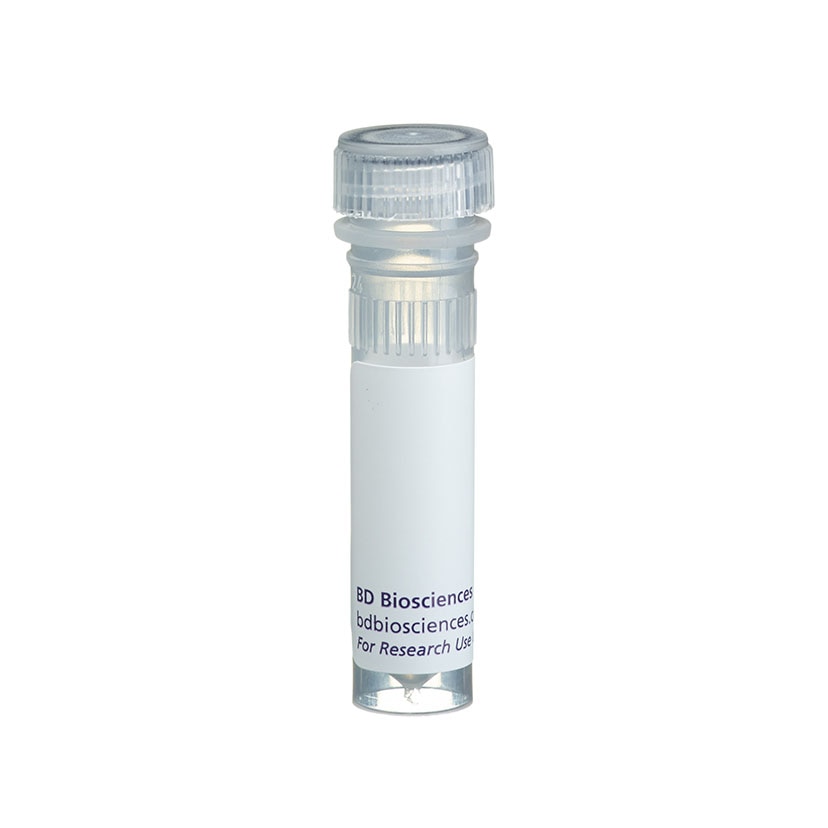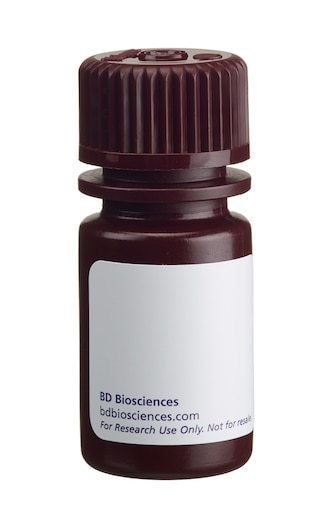Old Browser
This page has been recently translated and is available in French now.
Looks like you're visiting us from {countryName}.
Would you like to stay on the current country site or be switched to your country?
BD Pharmingen™ Purified NA/LE Anti-Human CD20 Rituximab Biosimilar
Clone Rituximab.rMAb (also known as Rituximab Biosimilar)
(RUO)



Complement-dependent cytotoxic treatment of Human Daudi cells using the Rituximab Biosimilar.rMAb. Cells from the Human Daudi (Burkitt's lymphoma, ATCC® CRL-213™) cell line were maintained in RPMI media containing heat-inactivated fetal bovine serum (56°C for 30 min; 1x10^6 cells/ml). The cells were then treated with 1.25 µg/ml of either Purified NA/LE Human IgG1, κ Isotype Control (Cat. No. 569605) or Rituximab Biosimilar.rMAb (Cat. No. 569496) followed by addition of a 25% final concentration of normal or heat-inactivated Human serum as indicated and incubated at 37°C for 5 hours. The cells were pelleted by centrifugation and resuspended in BD Pharmingen™ Stain Buffer (FBS) [Cat. No. 554656]. BD Via-Probe™ Cell Viability 7-AAD Solution (Cat. No. 555815/555816) was added to cells before analysis. Flow cytometry and data analysis were performed using a BD LSRFortessa™ X-20 Cell Analyzer System and FlowJo™ software. Data shown on this Technical Data Sheet are not lot specific.


BD Pharmingen™ Purified NA/LE Anti-Human CD20 Rituximab Biosimilar

Regulatory Status Legend
Any use of products other than the permitted use without the express written authorization of Becton, Dickinson and Company is strictly prohibited.
Preparation And Storage
Product Notices
- Please refer to www.bdbiosciences.com/us/s/resources for technical protocols.
- Since applications vary, each investigator should titrate the reagent to obtain optimal results.
- Please refer to http://regdocs.bd.com to access safety data sheets (SDS).
- An isotype control should be used at the same concentration as the antibody of interest.
Companion Products




The Rituximab.rMAb (also known as, Rituximab Biosimilar.rMAb) is a research grade recombinant monoclonal antibody that specifically recognizes the extracellular domain of human CD20 similarly to the therapeutic Rituximab antibody. Rituximab triggers target cell death through multiple mechanisms including complement-dependent cytotoxicity (CDC), antibody-dependent cellular cytotoxicity (ADCC), and apoptosis. The therapeutic Rituximab has been approved for treatment of B cell malignancies, autoimmune disorders, and transplant rejection. The Rituximab.rMAb is a chimeric recombinant human IgG1, kappa antibody that uses the same variable region sequences as Rituximab, combined with human IgG1, kappa constant region consensus sequences. CD20 is an ~33-37 kDa, unglycosylated four-transmembrane phosphoprotein with a cytoplasmic N-terminus and C-terminus that is encoded by MS4A1 (Membrane-spanning 4-domains, subfamily A, member 1). CD20 is expressed on pre-B-cells, naive and activated B cells, memory B cells, and at lower levels on a small subset of T cells but is absent from plasmablasts and plasma cells. It is also expressed on most malignant B cells and CD20-positive T-cell lymphomas. CD20 functions in mediating calcium transport and B cell activation, differentiation, and survival.
The Rituximab.rMAb is intended for research use only. It is not intended for use in therapeutic or diagnostic procedures for humans or animals.
Development References (10)
-
Almasri NM, Duque RE, Iturraspe J, Everett E, Braylan RC. Reduced expression of CD20 antigen as a characteristic marker for chronic lymphocytic leukemia. Am J Hematol. 1992; 40:259-263. (Biology).
-
Brekke OH, Sandlie I. Therapeutic antibodies for human diseases at the dawn of the twenty-first century.. Nat Rev Drug Discov. 2003; 2(1):52-62. (Biology). View Reference
-
Cragg MS, Walshe CA, Ivanov AO, Glennie MJ. The biology of CD20 and its potential as a target for mAb therapy. Curr Dir Autoimmun. 2005; 8:140-174. (Biology). View Reference
-
Deans JP, Li H, Polyak MJ. CD20-mediated apoptosis: signalling through lipid rafts. Immunology. 2002; 107:176-182. (Biology).
-
Golay J, Zaffaroni L, Vaccari T, et al. Biologic response of B lymphoma cells to anti-CD20 monoclonal antibody rituximab in vitro: CD55 and CD59 regulate complement-mediated cell lysis. Blood. 2000; 95:3900-3908. (Biology).
-
Hultin LE, Hausner MA, Hultin PM, Giorgi JV. CD20 (pan-B cell) antigen is expressed at a low level on asubpopulation of human T lymphocytes. Cytometry. 1993; 14:196-204. (Biology).
-
Kennedy AD, Solga MD, Schuman TA, et al. An anti-C3b(i) mAb enhances complement activation, C3b(i) deposition, and killing of CD20+ cells by rituximab.. Blood. 2003; 101(3):1071-9. (Biology). View Reference
-
Kitamura A, Yamashita Y, Mori N. CD20-positive cytotoxic T cell lymphoma: report of two cases and review of the literature. J Clin Exp Hematop. 2005; 45(1):45-50. (Biology).
-
Uchida J, Hamaguchi Y, Oliver JA, et al. The innate mononuclear phagocyte network depletes B lymphocytes through Fc receptor-dependent mechanisms during anti-CD20 antibody immunotherapy.. J Exp Med. 2004; 199(12):1659-1669. (Biology). View Reference
-
Zola H, Swart B, Nicholson I, Voss E. CD20. In: Zola H. Leukocyte and stromal cell molecules : the CD markers. Hoboken, N.J.: Wiley-Liss; 2007:72.
Please refer to Support Documents for Quality Certificates
Global - Refer to manufacturer's instructions for use and related User Manuals and Technical data sheets before using this products as described
Comparisons, where applicable, are made against older BD Technology, manual methods or are general performance claims. Comparisons are not made against non-BD technologies, unless otherwise noted.
For Research Use Only. Not for use in diagnostic or therapeutic procedures.